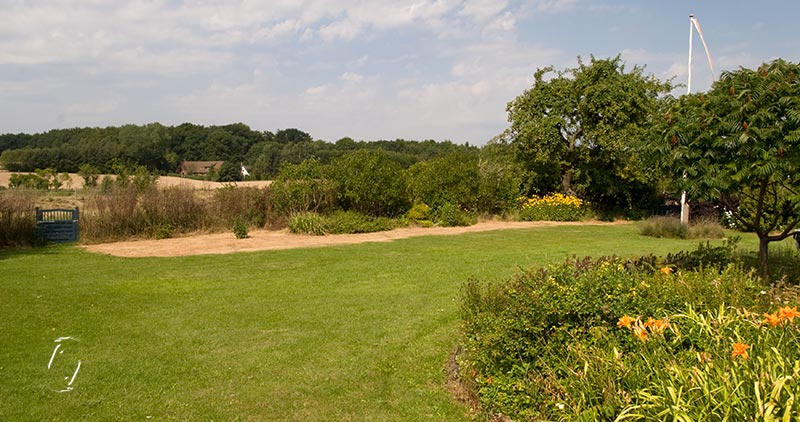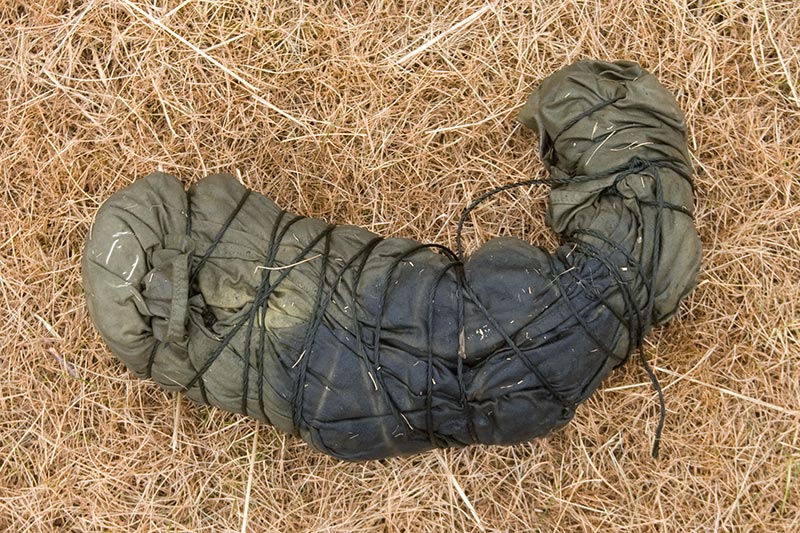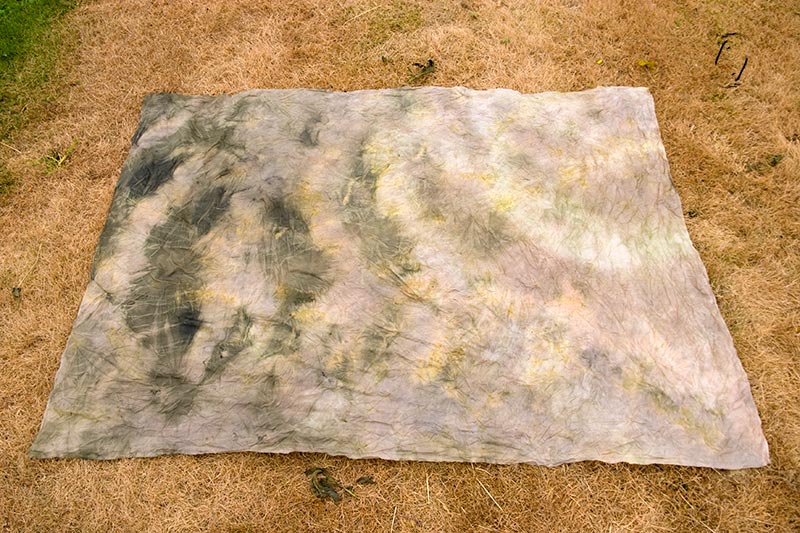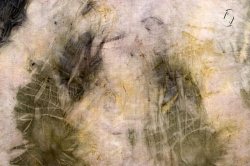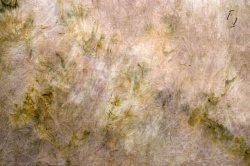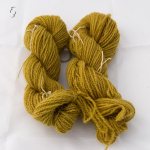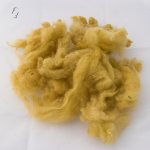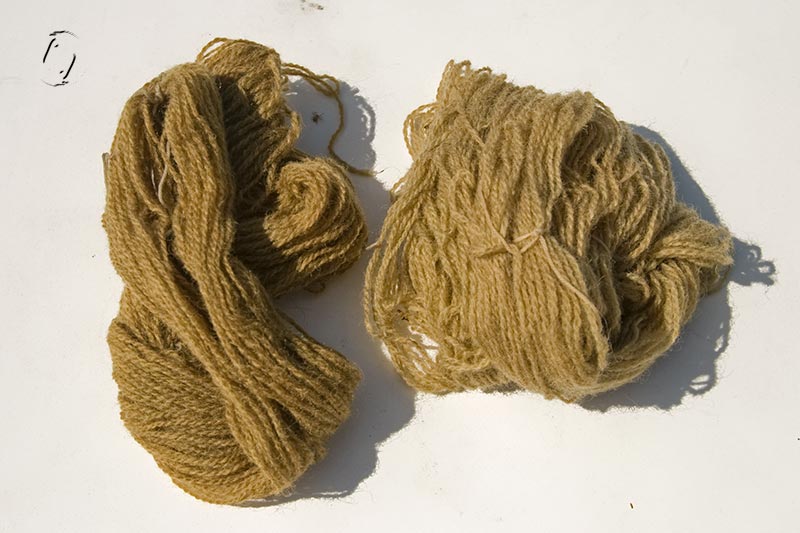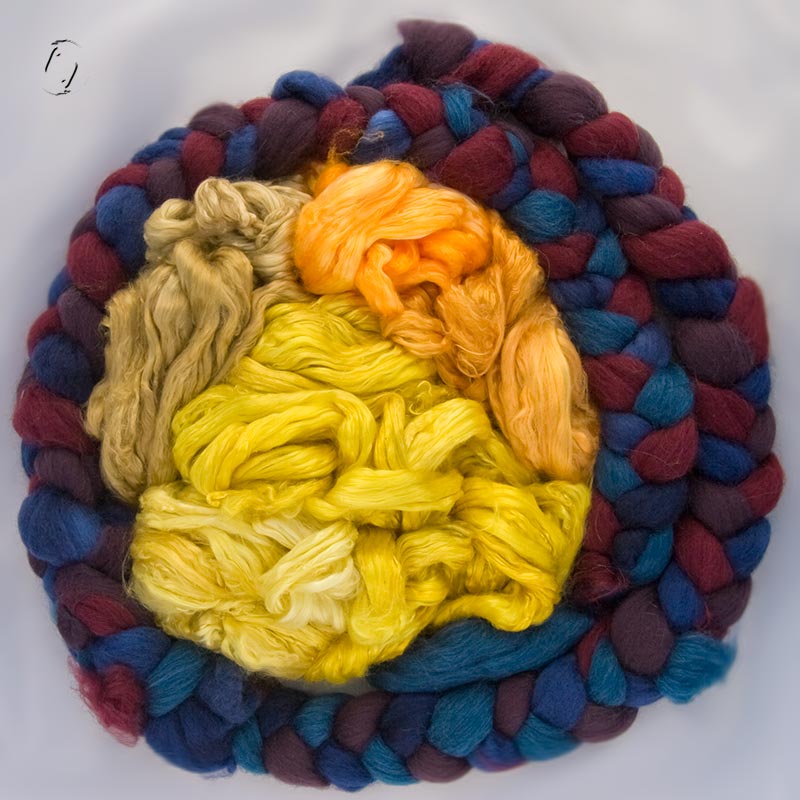See that strip of yellow? Yes, dead grass, and I know some people (you know who you are too) are wrinkling their noses at me, but I need all the help I can get battling grass and weeds at the moment. Sorry….
Right now the ground is like concrete, but once the autumn rains begin, I’m thinking I can dig up that turf, make a nice edge, till the earth and next summer add some better material to plant in and put my dye plants here. Actually I need a place to put my strawberries as well, so I may have a lot of digging to do.
I already have weld, woad and dyer’s chamomile in my not-to-be vegetable garden. I meant it to be, but as hard as it is to battle weeds on a field of clay previously used for grain, it becomes impossible when a ton of thistle seeds are accidentally blown into the place covering it like a BLANKET, no kidding, it just becomes impossible. The mice ruin my new plum trees. So I have a few berry bushes in there, use the space as a tree nursery from time to time and to heck with it.
So my new plant list so far is (yes, I’ve been through “A Dyer’s Garden” for inspiration), it may change before spring:
- Coreopsis tinctoria – I love how you can get both orange and yellow from this in the same dyebath and how little plant material is needed. Instant gratification!
- Weld – Reseda luteola
- Dyer’s Chamomile – Anthemis tinctoria
- Telekia
- Japanese indigo?
- St. John’s Wort – Hypericum perforatum
- Marjoram – origanum majorana
- Bronze fennel – Foeniculum vulgare
- Purple basil
- Hollyhock?
- Black eyed susan – Rudbeckia fulgida
- Marigold – tagetes
- Comfrey – symphytum
Goldenrod and tansy and purple loosestrife I can find in the forest. Others I already have on various parts of the property (10 acres).
â Leave a Comment
Farvebed
Jeg mÃ¥ desværre tage “det gule hakkejern” til hjælp i øjeblikket hvis jeg skal nÃ¥ haveopgaverne, sÃ¥ her har jeg gjort klar til mit forhÃ¥bentlig nye farvebed som jeg vil grave op og klargøre nÃ¥r vi fÃ¥r lidt vand til jorden, den er som beton lige nu. Et udmærket efterÃ¥rsprojekt?
Min køkkenhave, hvor den slags ellers skulle foregÃ¥, blev desværre overblæst med tidselfrø fra grønthøsteren, et tykt tæppe, sÃ¥ nu har jeg opgivet, der bor et par solbærbuske som med nød og næppe kan findes frem hver sommer….
Planteliste:
- Coreopsis tinctoria – skønhedsøje. Orange og gul fra samme farvebad og masser af krudt i!
- Anthemis tinctoria Рfarveg̴seurt
- Reseda luteola – Vau
- Telekia Рtusindstr̴le
- Japansk indigo?
- Symphytum – kulsukker
- Hypericum perforatum – sankthansurt
- Havemerian – Origanum majorana
- Bronzefennikel – Foeniculum vulgare
- Sort stokrose
- Rudbeckia fulgida – solhat
- Tagetes

